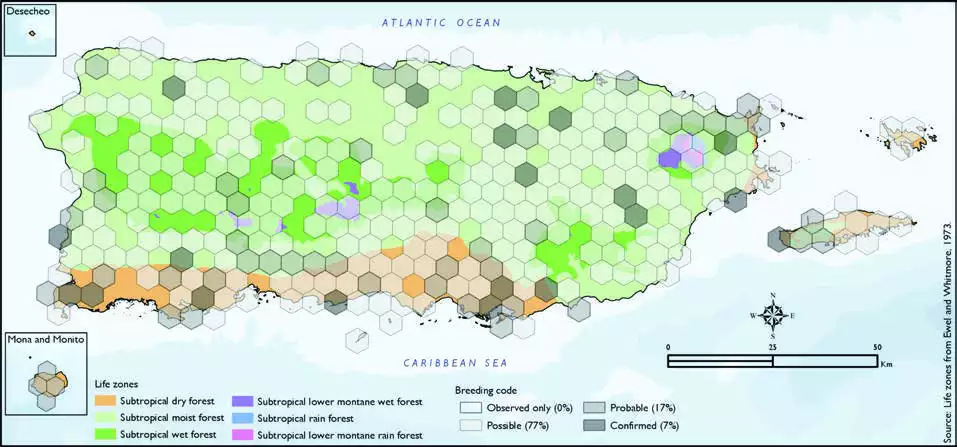Mangrove Cuckoo
Description
The mangrove cuckoo (Coccyzus minor) is a species of cuckoo that is native to the Neotropics.
Adults have a long tail, brown above and black-and-white below, and a black curved bill with yellow on the lower mandible. The head and upper parts are brown. There is a yellow ring around the eye. This bird is best distinguished by its black facial mask and buffy underparts. Although the scientific name is minor (meaning "small"), this species is on average the largest of North America's three Coccyzus cuckoos. Adults measure 28–34 cm (11–13 in) in length, weigh 64–102 g (2.3–3.6 oz) and span 38–43 cm (15–17 in) across the wings. The most common call heard is a guttural "gawk gawk gawk gawk gauk gauk". It will also call a single "whit".
Distribution & Habitat
The Mangrove Cuckoo occurs from south Florida in the United
States through Central America
and northern South America
including the West Indies, where
it is generally a common resident
throughout most of the islands
(Raffaele and others 1998). It is
common and fairly abundant
throughout Puerto Ricos
mainland at all elevations (Biaggi
1997). It is also known to inhabit
satellite islands such as Desecheo
(Meier and others 1989), Culebra
(Wetmore 1917), Mona (Barnés
1946, Bowdish 1902, Gordon
and others 1961, Terborgh and
Faaborg 1973), and Vieques
(Sorrié 1975, Wetmore 1916), in the latter being a common
resident throughout the year
(Gemmill 2015). This species
generally inhabits mangroves
and mangrove swamps, coffee
plantations, thickets (Raffaele
1989a), limestone hills, coastal
scrub, and mountain forests
(Oberle 2018). The atlas
fieldwork yielded a total of 513
records within 306 hexagons
or 64 percent of the 479 total
hexagons (see map). Of the 306
hexagons where this species
was found, breeding met the
atlas definition of confirmed in
7 percent (20) of the hexagons,
probable in 17 percent (51),
and possible in 77 percent (235)
(see map).Mangrove Cuckoo distribution. The map shows the highest breeding code by hexagon and overlaying the ecological life zones in
Puerto Rico. Note: percentages may not total 100 due to rounding. 71Mangrove Cuckoo/Pájaro Bobo Menor

Breeding Habits
The Mangrove Cuckoo builds a fl imsy nest made of dry twigs
and sticks, usually placed on
a horizontal limb in a tree or
bush (Biaggi 1997, Oberle
2018, Raffaele and others 1998).
Previously published reports
indicate that it breeds from
February to June (Raffaele and
others 1998). Atlas results show
that this species breeding season
extends throughout the year
with the most breeding activity
from March to June (see chart).
Overall, the breeding activity
peaks in May at the onset of the rainy season, and it mostly takes
place in the subtropical moist
forest life zone (57 percent of
the hexagons) (see table and
chart). It also breeds within the
subtropical dry forest life zone
(25 percent of the hexagons) and
in the subtropical wet and lower
montane wet forest life zones
at higher elevations (19 percent
of the hexagons) (see table
and map).
Conservation
The current population trend of the Mangrove Cuckoo is
suspected to be stable due to the lack of evidence for any
declines or threats, and it is
currently listed as a species
of least concern by the IUCN
(BirdLife International 2016).
Locally, this species is not
listed in any of the threatened
categories of PRDNER and
USFWS. In Puerto Rico, the
Mangrove Cuckoo has a
protected habitat in land of 12
percent or 911 km2 of the total area covered by the hexagons
where evidence of breeding
was found for this species
(7318 km2).
Related Species
Family:
cuckoo